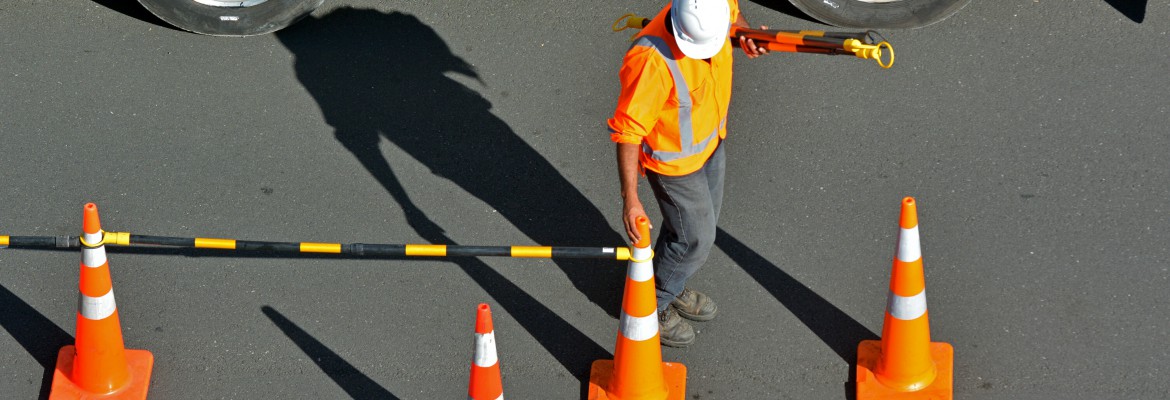The Atlantic Road Report
News and views collected from around the Atlantic region keeping you save and our roads running
NEWFOUNDLAND
PROPOSED CHANGES TO HIGHWAY TRAFFIC ACT WILL ALLOW FOR FURTHER IMPROVE‐ MENTS TO PUBLIC SAFETY
Amendments to the Highway Traffic Act to enable the use of image capture systems to help increase road safety on our province’s roads and highways were introduced for second reading today in the House of Assembly.
The proposed changes will allow for highway cameras to be used as a means of increasing compliance with the rules of the road and increasing safety for all road users in the province. The use of cameras can also help improve safety in construction zones and school bus zones. ‘
Other amendments introduced include consolidating penalties for select offences to the schedule of the Act for consistency purposes, and the reordering of impaired driving sections of the Act for readability and understanding.
The Provincial Government has made a number of recent improvements to the Highway Traffic Act including increased fines and tougher penalties for a number of offenses such as impaired driving; amendments regarding excessive speeding, street racing, stunting and move over provisions; a new offence for driving without due care and attention; and the introduction of a one-metre rule for cyclists and pedestrians. A list of recent legislative changes can be found in the backgrounder below.
These amendments speak to the importance of keeping current with changes in safety codes, vehicle design and other highway safety improvements, as well as responding to driving behaviours.
“Road safety has been a priority for our government and we have made a number of amendments to the Highway Traffic Act to accomplish this objective. The introduction of legislation to allow for camera technology continues our efforts to help further protect the people of Newfoundland and Labrador,” said the Honourable Sherry Gambin-Walsh, Minister of Service NL.
NEW BRUNSWICK
CONSTRUCTION TO BEGIN SOON ON COLES ISLAND BRIDGES REPLACEMENT
The construction phase of the Coles Island Bridge replacement project will begin soon the provincial government announced September 19..
“Replacing the Coles Island Bridges is critical to ensuring the safety of Route 10, one of New Brunswick’s strategic resource corridors,” said Transportation and Infrastructure Minister Bill Oliver. “This project will also contribute to our action on climate change. New structures will allow for increased truck payloads, resulting in fewer trips and a reduction of GHG emissions.” Work during this construction season will consist of the preparation of two detour bridges to take the traffic off the existing bridges. This will allow work to begin on removing the current structures and the construction of replacement bridges in future years.
The detour bridges will be completed in 2020, while construction of the replacement bridges is expected to take up to three years to complete.
The total cost of the project is estimated at $45 million. The federal government will fund up to $22,062,000 through the National Trade Corridors Fund and the provincial government will fund $22,800,000. Provincial funding for this phase of the project is provided through the Department of Transportation and Infrastructure’s $493-million capital budget for 2019-20.
NOVA SCOTIA
GRANTS STRENGTHEN PUBLIC TRANSPORTATION IN URBAN AND RURAL NOVA SCOTIA
Affordable, accessible and reliable public transit can make communities stronger. That is why government invests millions every year to help service providers maintain or expand public transit.
Through the Public Transit Assistance Program, government will provide almost $3 million to seven transit providers from Cape Breton to Yarmouth to help them buy buses, bus terminals and shelters.
Kings Transit Authority will use a $375,000 grant to buy new buses. These organizations have been receiving these grants since 2013-14.
“Government is committed to building stronger communities by making transportation more affordable, convenient and reliable, and by better connecting communities to each other,” said Communities, Culture and Heritage Minister Leo Glavine.
In addition, 13 organizations will receive $245,000 through the Nova Scotia Transit Research Incentive Program. These grants help communities develop ideas and plans for new and improved public transit in rural and unserviced urban areas.
Eskasoni First Nation in Cape Breton will explore potential public transit options using a $30,000 research grant to conduct a feasibility study and develop a business plan to explore transit options for Eskasoni First Nation.
“The Kings Transit Authority is grateful for the support it has received from the Province of Nova Scotia through the Public Transit Assistance Program.
This funding contribution will support planned investments in new transit vehicles and bolster efforts to improve the customer experience for our ridership in the Annapolis Valley,” said Glen Bannon, general manager Kings Transit Authority.
PRINCE EDWARD ISLAND
ON THE ROAD TO REDUCING TRANSPORTATION EMISSIONS
Supporting more sustainable transportation in Prince Edward Island will help Islanders lower their impact on the environment, while encouraging more walking, cycling, and community transit.
PEI’s Sustainable Transportation Action Plan has 27 action items to be implemented in the areas of transit, vehicles, active transportation and community design.
“We know transportation greenhouse gas emissions have been on the rise and it’s time to reverse that trend.
At the same time, we are investing in our roads to help keep pedestrians and cyclists safer and we are looking at the big picture for sustainable communities over the long term.”
Transportation, Infrastructure and Energy Minister Steven Myers.
The Sustainable Transportation Action Plan will be implemented over five years. Over the coming months, government will be working with the opposition and third party to identify priority items for next year.
“While we put these key first steps in place, I will also be working with my colleagues in government, the private sector, and innovative energy researchers to come up with more smart changes on how we all get to school, work and home,” added Myers.
“This includes building more sustainable communities, finding efficiencies in school bus routes, and exploring Islandwide public transit solutions.”
URBAN AND RURAL TRANSIT ACTION ITEMS
Action 1: Work with transit operators and community transportation partners to make transit systems safe, affordable and convenient for all users.
Action 2: Increase affordable, safe and inclusive community transportation services in rural areas.
Action 3: Promote and increase transit use through education and social marketing.
Action 4: Improve efficiencies and reduce emissions in the school transit system.
Action 5: Remove barriers to sustainable transportation for people with a low income. Vehicles and Transportation Action Items
Action 6: Work with municipalities and businesses to create a province-wide EV charging network of internet accessible, smart charging stations.
Action 7: Develop and deliver an EV and home charger incentive program to increase EV usage.
Action 8: Develop and deliver an educational campaign about electric vehicles, low emissions vehicles, and efficient driving.
Action 9: Establish a registration fee structure that promotes the purchase of lower emission vehicles.
Action 10: Develop a rebate program for retiring high emissions vehicles.
Action 11: Collaborate with the transport truck industry to administer efficiency education programs and explore technological advancements to reduce emissions.
Action 12: Work with local business fleet managers to promote efficiencies and the use of low and zero emission vehicles.
Action 13: Assess the provincial government’s light duty fleet and identify vehicles that are suitable to be replaced with electric models.
Action 14: Adopt provincial government procurement policies to increase the purchase of low and zero emission vehicles for its light duty fleet.
Action 15: Increase carpooling opportunities through additional infrastructure and public education.
Action 16: Provide options for provincial employees to reduce commuting distance, such as tele-commuting and satellite work sites.
Action 17: Monitor advances in technology and explore opportunities to electrify farm and marine transport, trucking and public transit. Active Transportation Action Items
Action 18: Develop a comprehensive active transportation plan and public transit plan for all of PEI.
Action 19: Expand active transportation infrastructure, while improving safety and providing connectivity between places.
Action 20: Dedicate a percentage of the province’s transportation budget to maintain and create new active transportation infrastructure.
Action 21: Work with municipalities to develop and support active transportation plans that improve cycling and pedestrian opportunities.
Action 22: Provide and promote active transportation options for schools and seek opportunities for pilot projects.
Action 23: Require active transportation assessments for all new provincial government buildings to incorporate facilities such as bike racks, showers and other appropriate amenities. Community Design and Infrastructure Action Items
Action 24: Encourage development patterns that support active transportation and public transit by identifying built up areas for future growth and by establishing standards for subdivision and development design.
Action 25: Continue to improve road infrastructure (such as cycling lanes, wider shoulders, and roundabouts) to construct and protect right-of-ways for active transportation and public transit corridors.
Action 26: Revise legislation to enable the requirement to provide dedicated space for active transportation corridors.
Action 27: Ensure planning authorities consider the full range of transportation needs within their areas of jurisdiction.


